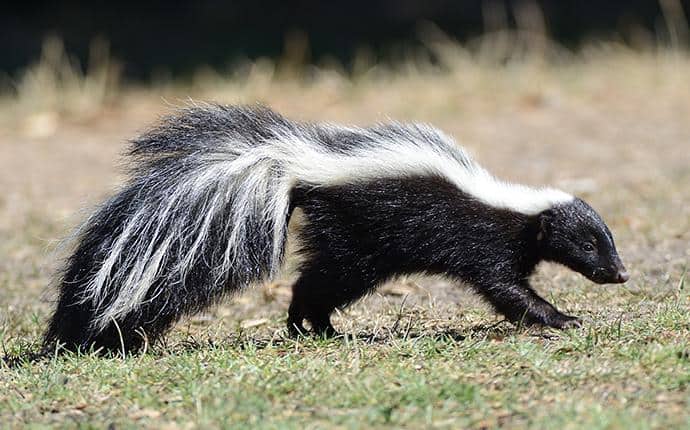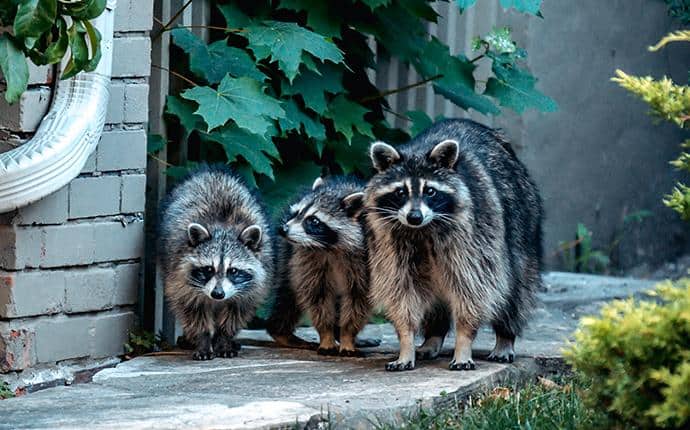
Bee & Wasp Control in Spokane
The Dangers of DIY Removal for Nests Hidden in Walls or Ground
Stinging insects near your Spokane home pose an immediate threat to your family's health and comfort, especially if a nest is active near doorways or play areas. Aggressive species like yellowjackets and hornets can deliver painful stings that necessitate a rapid and reliable professional removal process. Ignoring a small nest means risking a rapidly expanding colony and the possibility of a dangerous emergency.
At Prosite, our approach to pest control is firmly rooted in science and an obsession with exceptional service. Backed by nearly 15 years of experience, our licensed and insured technicians safely identify and eliminate dangerous nests with speed and precision. We provide custom-tailored solutions, including same-day emergency service, to secure the whole-home health for you and your loved ones.
Need urgent nest removal? Call us today at (509) 478-1925, or contact us online for your Bee & Wasp Control solution.
Recognizing the Immediate Danger of Stinging Insects
When dealing with stinging pests in Spokane, the first priority must always be safety. While some species are beneficial pollinators, aggressive insects like yellowjackets, paper wasps, and bald-faced hornets pose a genuine health risk, especially to those with allergies. These pests are highly protective of their nests, making accidental disturbance a major cause of painful stings and defensive swarming behavior.
Distinguishing between species and accurately locating the nest is crucial for effective and safe control. Since nests can be hidden in wall voids, deep underground, or high up under eaves, approaching them without expert training and protective gear is incredibly dangerous. Do not risk family or pet safety with unstable DIY methods.
- Yellowjackets: Highly aggressive scavengers, they often nest underground, in structural voids (walls, attics), or under dense shrubs. They are especially drawn to human food and drinks in late summer.
- Paper Wasps: Known for their umbrella-shaped, exposed nests hanging from eaves, decks, and porch ceilings. While less aggressive than yellowjackets, they will sting if their nest is directly threatened.
- Bald-Faced Hornets: Actually a type of aggressive wasp, they build large, grayish, football-shaped paper nests high in trees or on structures. They are notorious for painful, venomous stings and fierce nest defense.
- Honeybees: Less aggressive, fuzzy, and crucial pollinators. Professionals will often attempt exclusion or safe removal/relocation instead of extermination, especially when found nesting in structural voids.
- Entry Points: Consistent stream of insects entering a specific hole or crack in a wall, foundation, or tree trunk, which indicates a protected and rapidly growing colony source inside the structure.
If you observe frequent activity or locate a nest, keep a safe distance and contact a professional immediately to minimize the risk of a severe allergic reaction or mass stinging event on your property.

The Importance of Professional Removal for Stinging Nests
Handling a stinging insect nest without professional training is extremely dangerous and rarely successful. Wasps and hornets are highly defensive, and a botched DIY attempt can result in dozens of painful, potentially life-threatening stings. Professionals possess the specialized protective gear and high-efficacy, regulated products necessary to safely neutralize aggressive colonies without risking harm to residents or pets.
Furthermore, DIY solutions often fail to eliminate the entire colony, particularly when the nest is hidden inside a structural void or underground. These incomplete treatments can force the insects to seek new, internal exits, causing them to chew through drywall and suddenly flood your living space. This escalation is both terrifying and significantly more difficult to resolve safely.
Choosing a professional ensures that the job is done definitively, safely, and efficiently the first time. Experts are trained to identify beneficial pollinators for relocation and to implement long-term exclusion strategies, guaranteeing your property is secured against future infestations and restoring your whole-home health.

FAQs About Bee & Wasp Control
What should I do if I find a bee nest on my property?
Avoid disturbing the nest and contact a licensed bee exterminator. Bees can become defensive if threatened, and professionals will assess and resolve the situation safely.
Are all bees in Washington protected by law?
No, not all bees have protected status, but some, like honeybees and certain native species, have specific protections. A trained professional recognizes these differences and follows guidelines accordingly.
How quickly can a bee infestation be addressed?
Response times vary by location and severity of the problem. Many infestations can be inspected and treated within a few business days, especially when urgent situations arise.
What safety measures do you take during removal?
We use science-backed processes and targeted applications to minimize risk to people, pets, and beneficial pollinators. Our approach always follows local safety and environmental regulations.
Will treatment keep bees from coming back?
Our ongoing maintenance programs and prevention guidance can help reduce future risks, but no solution guarantees permanent exclusion. Regular monitoring and property care are crucial for long-term results.
Frequently Asked Questions
-
Do you provide wildlife control services in Spokane?No, we only offer wildlife control services to customers in Kittitas & Yakima counties.
-
Skunks

Their most unique feature is their black body which has a white stripe starting at their head and divides into two stripes that travel down their entire body and tail. But, their most identifiable characteristic is the extremely foul odor that skunks spray from glands found at the base of their tail as a defense mechanism. If sprayed directly into a person's or animal's eyes the spray can cause temporary blindness.
Adult skunks grow to between 20 and 30 inches in length, with their tail adding 7-15 inches to their total length. Adults weigh between 2.5 and 11.5 pounds (i.e. the size of a small housecat).
*Limited services available for skunks.
-
Raccoons

Raccoons have many easily recognizable physical features including a black “mask” of fur that surrounds their eyes, fluffy black and gray ringed tails, and a hunched appearance caused because their hind legs are longer than their front legs. Their bodies are covered in dense salt and peppered colored fur. Raccoons may grow to up to three feet in length and weigh between 10 and 30 pounds.





